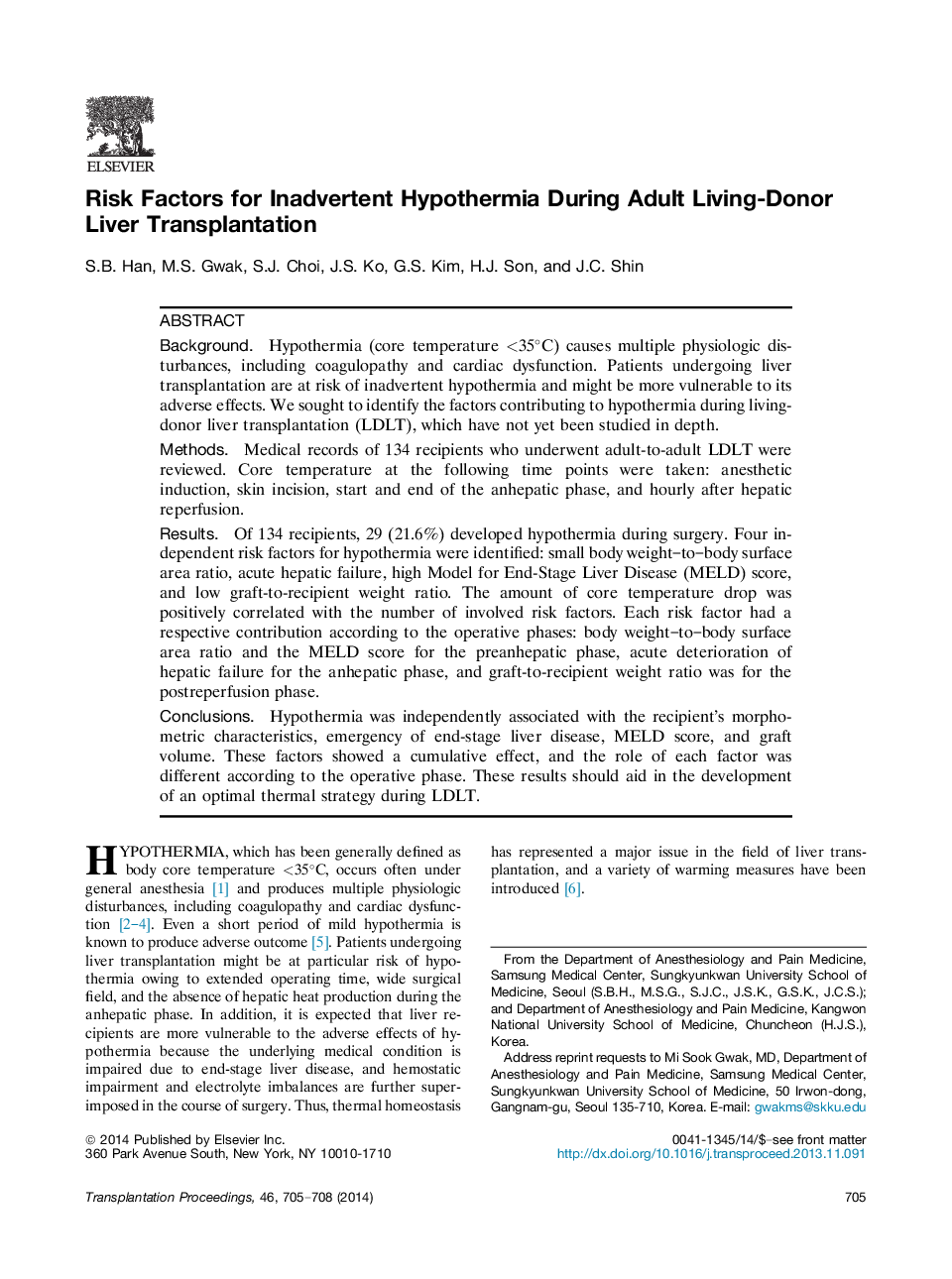| Article ID | Journal | Published Year | Pages | File Type |
|---|---|---|---|---|
| 4258375 | Transplantation Proceedings | 2014 | 4 Pages |
BackgroundHypothermia (core temperature <35°C) causes multiple physiologic disturbances, including coagulopathy and cardiac dysfunction. Patients undergoing liver transplantation are at risk of inadvertent hypothermia and might be more vulnerable to its adverse effects. We sought to identify the factors contributing to hypothermia during living-donor liver transplantation (LDLT), which have not yet been studied in depth.MethodsMedical records of 134 recipients who underwent adult-to-adult LDLT were reviewed. Core temperature at the following time points were taken: anesthetic induction, skin incision, start and end of the anhepatic phase, and hourly after hepatic reperfusion.ResultsOf 134 recipients, 29 (21.6%) developed hypothermia during surgery. Four independent risk factors for hypothermia were identified: small body weight–to–body surface area ratio, acute hepatic failure, high Model for End-Stage Liver Disease (MELD) score, and low graft-to-recipient weight ratio. The amount of core temperature drop was positively correlated with the number of involved risk factors. Each risk factor had a respective contribution according to the operative phases: body weight–to–body surface area ratio and the MELD score for the preanhepatic phase, acute deterioration of hepatic failure for the anhepatic phase, and graft-to-recipient weight ratio was for the postreperfusion phase.ConclusionsHypothermia was independently associated with the recipient's morphometric characteristics, emergency of end-stage liver disease, MELD score, and graft volume. These factors showed a cumulative effect, and the role of each factor was different according to the operative phase. These results should aid in the development of an optimal thermal strategy during LDLT.
